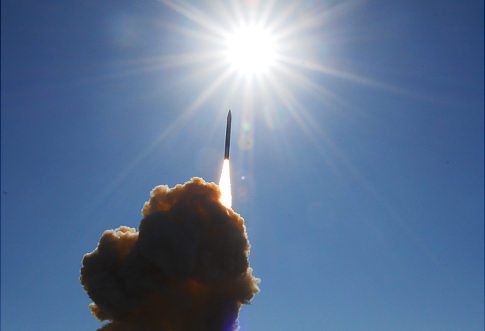In 2009 the Obama Administration cancelled the plan to deploy a version of the U.S. national missile defense system in Europe, the so-called Third Site. Instead, the White House proposed a tailored regional missile defense based on its Phased Adaptive Architecture (PAA) concept that sought to leverage relatively mature and cost effective technologies in a series of deployments that would pace the evolving threat.
The plan proposed for the European regional missile defense involved four incremental deployments based largely on the Aegis Ballistic Missile Defense System (BMDS) and variants of the Standard Missile-3. These systems would be deployed both on ships and on shore.
Until recently, the Obama Administration’s plan to deploy missile defenses to Europe has been moving along rather well. The first U.S. warship with the upgraded Aegis BMDS and SM-3 Block 1A has been deployed. Spain had agreed to allow the basing of additional Aegis BMDS-equipped ships. Agreements had been secured with Poland, Rumania and Turkey to host portions of the Aegis Ashore portion of the European PAA. Testing of upgraded sensor and command and control hardware and software is proceeding.
Admittedly, there have been bumps in the road. A recent test of the next variant of the SM-3, the more capable Block IB, failed. In addition, the Senate Appropriations Committee zeroed out funding for development of the most advanced version of the SM-3, the long-range IIB, and redirected most of the savings to procure additional IB and IIA variants. This move does address the need to increase the inventory of SM-3s in the short term. However, it shortchanges the long-term security of both the United States and its allies by delaying development of the more advanced SM-3 IIB missile.
One of the challenges with the Third Site had been Russian opposition to the program. Although the Obama Administration had not made the point explicitly, it was hoped that by deploying a system more clearly directed at countering non-strategic ballistic missiles and based largely on components from theater missile defense programs, Russian acquiescence to, if not outright support for, the program could be achieved. Critics of the administration’s missile defense policies accused the White House of cancelling the Third Site as a gift to Moscow in keeping with the foreign policy goal of a reset in U.S.-Russian relations. Negotiations had been initiated between the two powers to establish cooperation on early warning and missile defenses.
Now the Russians may be posing an additional problem for the Obama Administration’s plans to deploy missile defenses in Europe. U.S.-Russian negotiations have not progressed. Moreover, the U.S. has refused to even entertain the idea of an agreement that put legal limits on the European theater missile defense. Russia responded last week by warning that unless its concerns were adequately addressed, specifically in a binding legal agreement, it would take countervailing measures. Among the measures mentioned were to deploy missiles capable of targeting missile shield sites or even to withdraw from the New START treaty.
So much for a reset in U.S.-Russian relations.
Moscow knows full well that the European missile defense cannot threaten its strategic deterrent. Even the most advanced capabilities, not planned for deployment until 2020, are in the wrong geographic location to threaten Russia’s strategic missile forces. Moscow’s decision to play hardball has much more to do with its interest in ensuring that Europe remains vulnerable to Russian theater capabilities, particularly its shorter-range nuclear forces. This reality creates a problem not only for the administration’s missile defense plans but also for its goal of further reducing the nuclear arsenals of the two sides.










